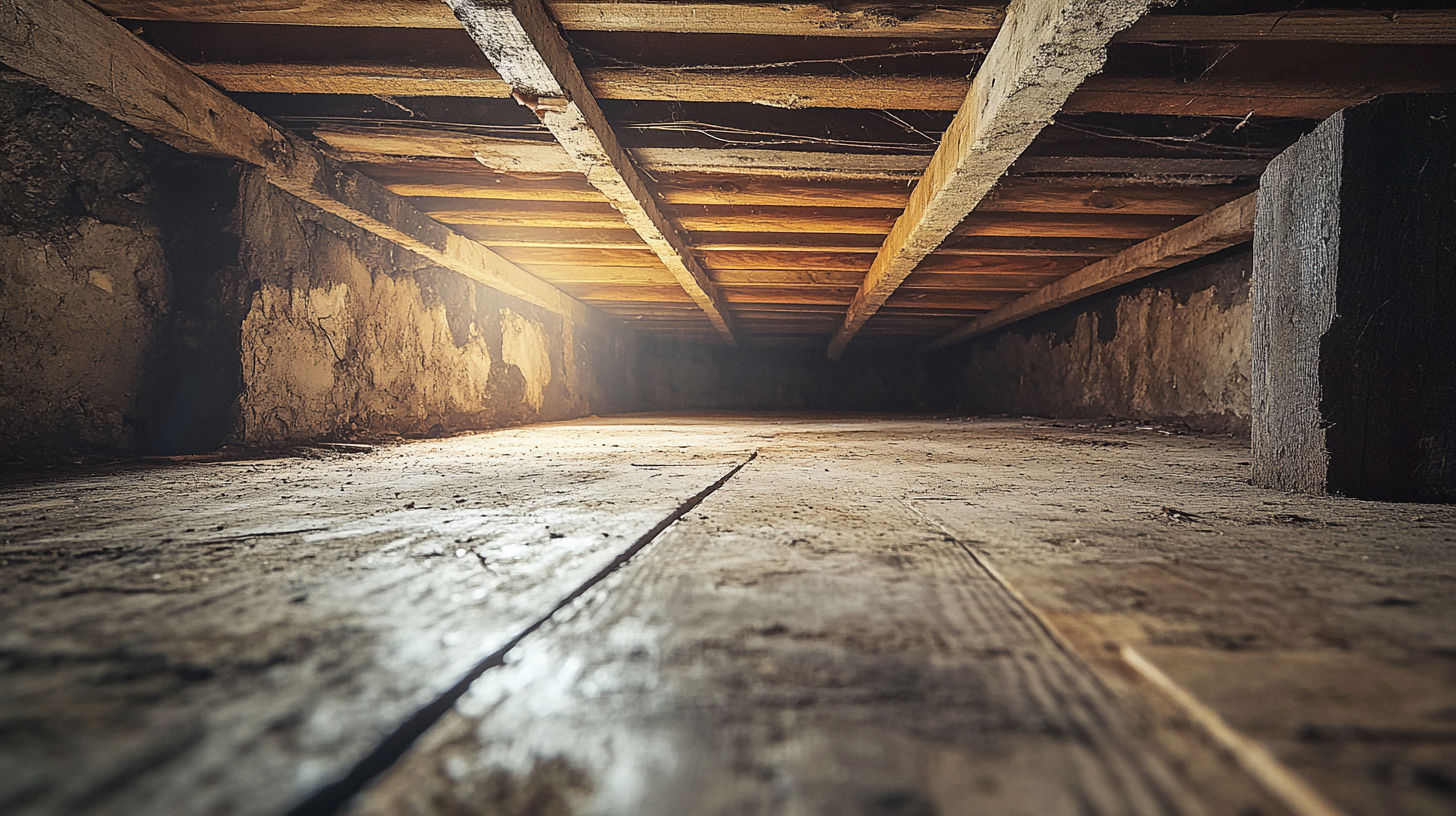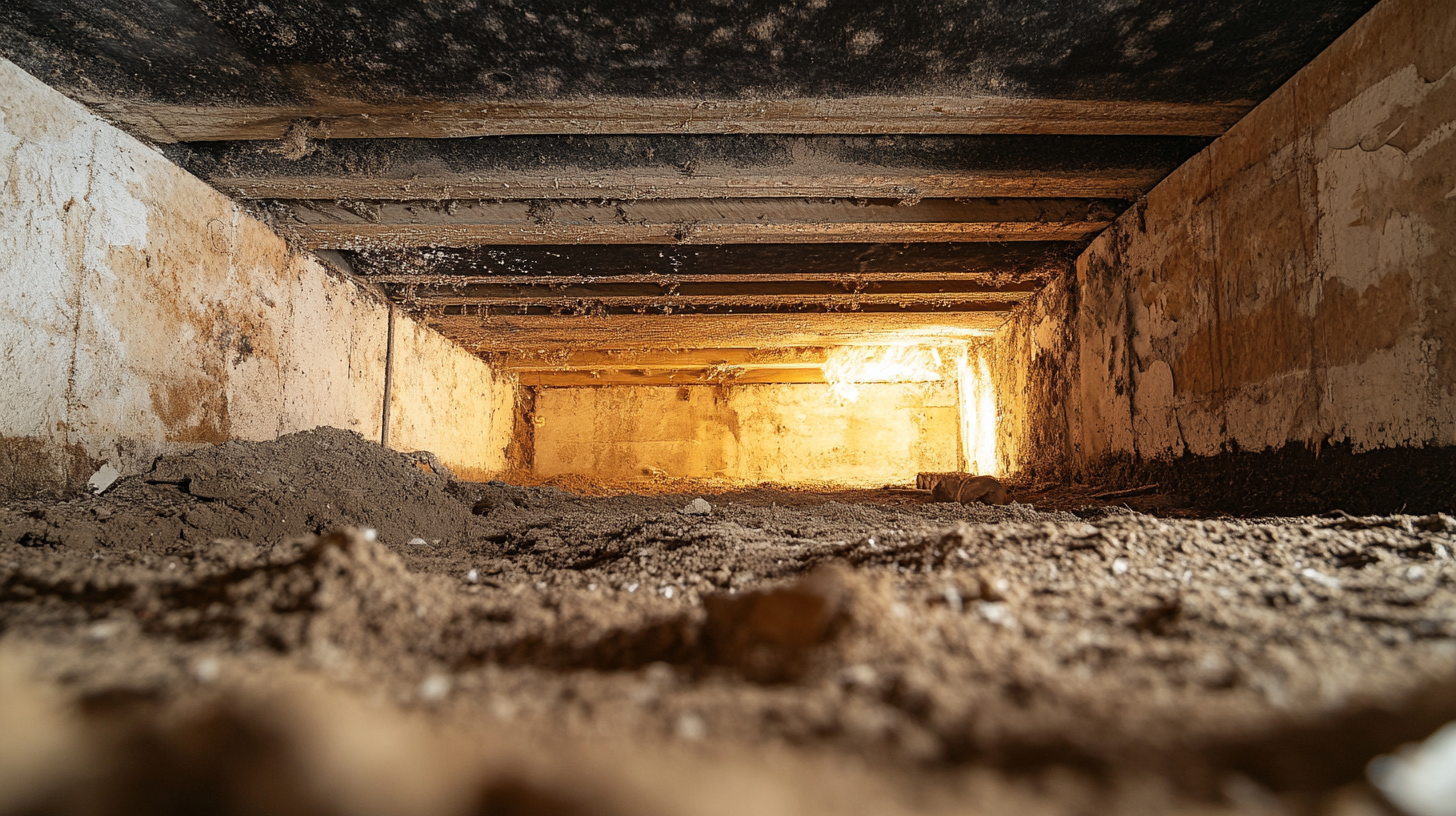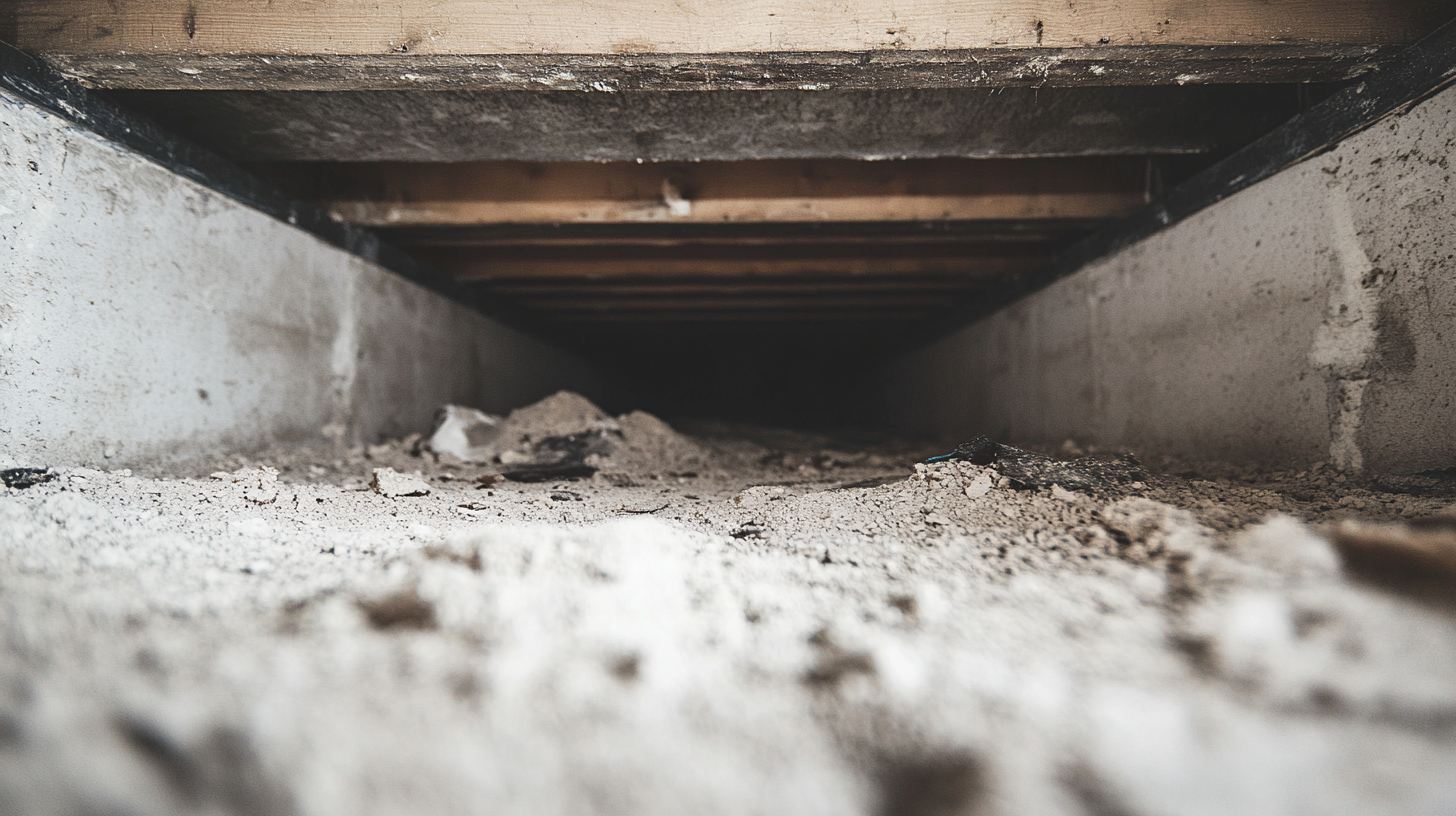The Impact of Humidity on Odor Control and Neutralization

Humidity levels play a crucial role in determining the comfort, indoor air quality, and overall health of your living environment. High or low humidity can significantly affect how comfortable a space feels, but its impact goes far beyond comfort alone. Improper humidity levels can lead to a range of indoor air quality issues, including the growth of mold, dust mites, and other allergens, which can negatively impact respiratory health. On the other hand, overly dry air can cause skin irritation, increase the risk of respiratory infections, and exacerbate asthma symptoms.
Maintaining balanced humidity levels is essential not only for comfort but also for promoting a healthy home environment. This blog will explore how humidity influences air quality, the risks associated with both high and low humidity, and the steps you can take to achieve an optimal indoor climate for well-being.
How High Humidity Contributes to Odor Issues
Excess humidity in your home doesn’t just make the air feel heavy; it also plays a major role in the formation and persistence of unpleasant odors. High humidity levels create an environment where mold, mildew, bacteria, and other odor-causing agents thrive. By understanding how moisture influences odor issues, you can take steps to control humidity and maintain a fresh-smelling, healthy home.
The Role of Moisture in Odor Formation
Mold and Mildew Growth
High humidity provides the perfect conditions for mold and mildew to grow, leading to musty odors that are difficult to eliminate. Mold spores require moisture to thrive, and in a damp environment, they quickly colonize surfaces like walls, carpets, and furniture. As mold and mildew spread, they release foul-smelling compounds into the air, which are not only unpleasant but also harmful to indoor air quality.
Where It Happens: Moisture-prone areas like basements, bathrooms, and kitchens are especially vulnerable to mold and mildew growth. These rooms often have poor ventilation, allowing humidity to linger and encouraging spore development in fabrics, grout, and hidden corners.
Bacterial Growth
Excess moisture also promotes bacterial growth, which is another common source of odors. Bacteria flourish in damp conditions, particularly in places where organic matter is present, such as kitchens and bathrooms. As bacteria multiply, they break down organic materials and produce volatile compounds that result in bad smells.
Common Problem Areas: Basements, kitchens, and bathrooms often suffer from bacterial buildup due to moisture combined with food particles, hair, or soap scum. Over time, these areas become hotspots for odor-causing bacteria.
Decomposition of Organic Materials
High humidity accelerates the decomposition of organic materials, contributing to foul smells in your home. Food waste, pet hair, and dust particles break down more quickly in a damp environment, leading to intensified odors. Fabrics, carpets, and upholstery can also trap moisture, worsening odor retention and making it harder to remove the smells.
How It Happens: Trapped moisture in carpets, couches, and bedding provides a breeding ground for bacteria, mold, and mildew. These materials absorb humidity from the air, allowing odors to linger long after the moisture source is gone.
Impact on Indoor Air Quality
Increased Airborne Pollutants
High humidity doesn’t just allow odors to form—it also traps odor particles in the air, making smells more prominent and harder to eliminate. The moisture in the air holds onto odor molecules, making them more noticeable and difficult to dissipate. This leads to a stale, unpleasant indoor atmosphere, even when the source of the odor is no longer present.
Why It Matters: With high humidity, you’re more likely to notice odors lingering in the air, and air fresheners or surface cleanings may only provide temporary relief.
Dust Mites and Allergens
High humidity levels also encourage the proliferation of dust mites and other allergens, which can contribute to both odor issues and health concerns. Dust mites thrive in moist environments, and their waste products, along with mold spores, can add to the musty smell in your home. In addition to creating unpleasant odors, these allergens can trigger respiratory problems, especially in individuals with asthma or allergies.
Health Impacts: The presence of dust mites, mold spores, and other allergens in humid environments not only worsens odor problems but also degrades indoor air quality, leading to potential health risks.
The Effect of Low Humidity on Odor Control
Maintaining balanced humidity levels is essential for controlling odors in your home. While high humidity creates a breeding ground for odor-causing agents like mold and bacteria, low humidity can have the opposite effect, helping to reduce odor retention. However, low humidity can also present its own challenges, requiring a more nuanced approach to odor management.
Dry Air and Reduced Odor Retention
How Low Humidity Helps Neutralize Odors
Low humidity plays a crucial role in odor control by reducing the moisture content in the air, which limits the conditions that odors need to develop and persist. Odor-causing agents such as mold, mildew, and bacteria rely on moisture to thrive. In dry environments, the lack of moisture inhibits their growth, preventing odors from building up. Low humidity also minimizes the chances of fabrics, carpets, and upholstery retaining moisture, which in turn helps reduce the absorption and retention of smells.
Why It Works: With less moisture in the air, the conditions necessary for mold and bacteria to produce odors are minimized, making it easier to maintain a fresh-smelling environment.
Dry Air and Dehydration of Odor-Causing Agents
Low humidity helps in the faster drying of spills, pet accidents, and other odor-causing substances. When moisture is quickly removed from these sources, the growth of odor-causing bacteria is significantly reduced. For example, in low-humidity conditions, a pet accident on the carpet is more likely to dry quickly, preventing the development of persistent odors that can otherwise linger in damp environments.
Why It Matters: Faster drying means less opportunity for bacteria to grow and cause odors. This can be especially beneficial for homes with pets or children, where spills and accidents are common.
Potential Challenges of Low Humidity
Static Odor Retention
While low humidity prevents the growth of many odor-causing agents, it doesn't completely eliminate odor issues. In dry environments, dust particles and other fine debris can still carry smells. These particles can cling to fabrics, carpets, and upholstery, trapping odors even when moisture levels are low. Additionally, certain odors, such as those from cooking or smoke, can adhere to surfaces regardless of humidity levels.
Explanation: Low humidity reduces moisture, which limits mold and bacteria growth, but it doesn’t fully address odors carried by dust and other particles. This means that dry air can slow odor buildup, but it’s not always a complete solution for odor control.
Managing Humidity for Better Odor Control
Controlling humidity is one of the most effective ways to manage odors in your home. Both high and low humidity can impact odor development and indoor air quality, so maintaining balanced moisture levels is key to creating a fresh and comfortable living environment. By understanding the optimal humidity range and how to manage it, you can prevent odors and improve overall air quality.
Ideal Humidity Levels for Odor Prevention
Optimal Indoor Humidity Range
Maintaining the right humidity levels in your home is essential for both comfort and odor prevention. The ideal indoor humidity range is between 30-50%. Within this range, moisture levels are kept in check, reducing the likelihood of mold, mildew, and bacteria growth—common sources of persistent odors. This range also helps prevent fabrics, carpets, and other soft surfaces from absorbing excess moisture, which can trap and amplify odors.
Why It Matters: Staying within this range keeps the air comfortable while preventing odors caused by too much humidity (mold and mildew) or too little humidity (dust and allergens).
Impact of Extreme Humidity
Both too much and too little humidity can cause problems in your home. High humidity (above 50%) encourages the growth of odor-causing agents like mold and mildew, which can produce musty, unpleasant smells. On the other hand, very low humidity (below 30%) can lead to dry air, which may not directly cause odors but can contribute to static odor retention, as dust and fine particles settle and carry smells.
Risks: High humidity makes your home more prone to dampness and odor buildup, while low humidity can dry out materials, allowing dust and allergens to trap odors in fabrics and carpets.
Dehumidifiers for Humidity and Odor Control
How Dehumidifiers Work
Dehumidifiers are devices designed to remove excess moisture from the air, helping to maintain a balanced indoor environment. By reducing humidity, dehumidifiers minimize the conditions that allow mold, mildew, and bacteria to thrive. This, in turn, helps to control odors associated with high moisture levels.
How They Help: Dehumidifiers prevent dampness in areas prone to high humidity, such as basements, kitchens, and bathrooms, reducing the likelihood of musty or moldy odors.
Types of Dehumidifiers
There are two main types of dehumidifiers for home use: portable units and whole-home systems.
Portable Dehumidifiers: These are compact, moveable units ideal for individual rooms or small areas. They are great for targeting specific spaces like bathrooms or basements.
Whole-Home Dehumidifiers: These systems are integrated into your HVAC system and regulate humidity throughout your entire home, making them more suitable for larger spaces or homes in consistently humid climates.
How to Use a Dehumidifier Effectively:
Place in High-Humidity Areas: Position dehumidifiers in rooms with excess moisture, such as basements, bathrooms, and kitchens, where odors are likely to develop.
Run Regularly: Operate your dehumidifier consistently, especially during damp seasons or in naturally humid climates, to prevent moisture buildup and maintain odor control.
Proper Ventilation to Reduce Odors
The Role of Airflow in Humidity Control
Good ventilation is essential for controlling humidity and preventing moisture buildup, which leads to odors. Proper airflow helps to keep humidity levels in balance by expelling excess moisture and introducing fresh air. This is especially important in enclosed spaces where moisture tends to accumulate, such as bathrooms, kitchens, and laundry rooms.
How to Promote Airflow: Regularly open windows and doors to allow fresh air circulation. In rooms prone to high humidity, like bathrooms and kitchens, use exhaust fans to remove moist air and prevent it from settling in fabrics and walls.
Installing Whole-House Ventilation Systems
For homes with persistent humidity issues, installing a whole-house ventilation system can be a game-changer. These systems ensure consistent airflow throughout the home, helping to regulate humidity levels and reduce odors in larger or poorly ventilated spaces.
Why It’s Effective: A whole-house ventilation system can be especially beneficial in homes where natural airflow is limited, or in climates with high humidity. These systems not only reduce odors but also improve overall indoor air quality by preventing the buildup of moisture, mold, and allergens.
Natural Ways to Control Humidity and Odors
Controlling humidity naturally is an effective way to prevent unpleasant odors and maintain a fresh-smelling home. By using moisture absorbers and houseplants, you can reduce excess moisture in the air while keeping your space eco-friendly. Below are simple and natural methods for managing both humidity and odors in your home.
Using Moisture Absorbers
Baking Soda
Baking soda is a versatile and natural solution for both dehumidifying and absorbing odors. It works by absorbing moisture from the air, making it especially useful for small, enclosed spaces prone to dampness. In addition to controlling humidity, baking soda neutralizes odors by trapping odor-causing particles, leaving the area smelling clean and fresh.
How to Use Baking Soda:
- Closets: Place an open box or small bowl of baking soda on a shelf in your closet to absorb moisture and prevent musty smells from developing.
- Refrigerators: A box of baking soda in the refrigerator helps to keep humidity levels in check and neutralize food odors.
- Other Confined Areas: You can also place baking soda in areas like under the sink, in cupboards, or in laundry rooms to absorb excess moisture and prevent odors from building up.
Activated Charcoal
Activated charcoal is a highly effective natural moisture absorber and odor neutralizer. Its porous structure allows it to trap moisture and odor-causing molecules, making it ideal for long-term humidity and odor control. Charcoal is also fragrance-free, which makes it perfect for those looking to avoid artificial scents.
How to Use Activated Charcoal:
- Rooms and Living Areas: Place activated charcoal bags in rooms that tend to collect moisture, such as basements or bathrooms. You can tuck them under furniture or near problem areas where dampness is a concern.
- Under Furniture: Charcoal bags can be discreetly placed under couches or in corners to continuously absorb moisture and eliminate odors without taking up visible space.
- Near Problem Areas: Place charcoal bags in musty areas like closets, bathrooms, or behind appliances to neutralize odors and absorb humidity for long-term freshness.
Houseplants for Natural Humidity Regulation
How Houseplants Help
Certain houseplants naturally absorb moisture from the air, making them excellent for regulating indoor humidity and preventing the growth of odor-causing mold and mildew. These plants also purify the air by filtering out toxins, further enhancing the freshness of your home. By reducing excess moisture, houseplants can help maintain balanced humidity levels and decrease the likelihood of odors developing.
Recommended Plants:
- Spider Plant: Known for its ability to absorb moisture and filter out airborne toxins, the spider plant is low-maintenance and effective at improving air quality in most indoor spaces.
- Boston Fern: Boston ferns thrive in humid environments, but they also help reduce excess moisture by absorbing it from the air. Their air-purifying qualities make them a great choice for living rooms and bedrooms.
- Peace Lily: Peace lilies are not only beautiful but also highly effective at absorbing moisture and eliminating mold spores from the air. They are ideal for areas like bathrooms or kitchens, where humidity levels tend to be higher.
Where to Place These Plants:
- Bathrooms and Kitchens: Place moisture-absorbing plants like peace lilies and Boston ferns in bathrooms or kitchens to help regulate humidity levels and reduce the chances of mold growth or musty smells.
- Living Areas: Spider plants are well-suited for living rooms, bedrooms, or home offices, where they help keep air fresh and reduce excess moisture. Place them near windows or in corners for optimal effect.
- Humid Corners: For rooms prone to moisture, like basements or laundry rooms, strategically placing these plants can naturally reduce humidity and improve air quality, helping to prevent odors from developing.
Controlling Specific Odor Types in Humid Environments
Humidity can exacerbate odors by creating the perfect conditions for mold, mildew, and bacteria to thrive. In environments where moisture levels are high, certain types of odors become more difficult to manage. Using natural methods and targeted treatments, you can effectively control specific odors in humid spaces, ensuring your home stays fresh and odor-free.
Tackling Mold and Mildew Odors
Vinegar and Baking Soda Treatment
Mold and mildew thrive in humid conditions, leading to musty odors that can permeate walls, floors, and furniture. Vinegar and baking soda are powerful natural solutions that can neutralize these odors without harsh chemicals. Vinegar’s acidic properties help kill mold spores, while baking soda absorbs moisture and odors.
How to Apply:
Walls and Floors: For moldy walls or floors, spray a mixture of equal parts vinegar and water directly onto the affected areas. Allow it to sit for at least 10-15 minutes, then wipe clean. For floors, you can sprinkle baking soda over the area after cleaning with vinegar to absorb any remaining moisture and odor.
Furniture: For upholstered furniture, lightly sprinkle baking soda on the affected areas, let it sit for several hours to absorb moisture and odors, then vacuum it off. Follow with a light mist of vinegar solution, being careful not to oversaturate the fabric, and allow it to air dry.
Hydrogen Peroxide for Stubborn Odors
For more stubborn mold or mildew odors, hydrogen peroxide is an excellent option. It’s effective at killing mold and mildew while being safe for use on most fabrics and carpets. Hydrogen peroxide breaks down organic compounds that cause odors, leaving the treated areas smelling clean.
How to Apply:
Fabrics and Carpets: Mix a 3% hydrogen peroxide solution with water in a spray bottle. Lightly spray it on the affected areas of carpets or upholstery, making sure to avoid excessive wetting. Allow it to dry completely in a well-ventilated room to ensure the mildew odors are neutralized.
Eliminating Pet Odors in High-Humidity Areas
Regular Cleaning and Dehumidification
Pet odors can become more pronounced in high-humidity environments, where moisture allows bacteria from pet fur, litter boxes, and accidents to flourish. Regular cleaning of pet-prone areas, combined with proper humidity control, is key to preventing odor buildup. Dehumidifiers are particularly useful in pet areas, such as rooms with litter boxes or pet beds, as they reduce the moisture that allows bacteria and odors to thrive.
How to Use Dehumidifiers in Pet Areas:
Place dehumidifiers in rooms where pets spend the most time, such as basements or laundry rooms, to maintain dry conditions and prevent the growth of odor-causing bacteria.
Regularly clean pet beds and litter boxes, and ensure these areas are properly ventilated to minimize moisture and odors.
Natural Enzyme Cleaners
Enzyme-based cleaners are highly effective for breaking down the organic compounds found in pet urine, feces, and vomit, which are common sources of strong odors. In humid environments, these odors can persist if not properly addressed. Enzyme cleaners work by targeting the proteins in organic waste, fully neutralizing the smell rather than simply masking it.
How to Apply:
Use enzyme-based cleaners on areas where pets have had accidents, particularly in carpets or upholstery. Apply the cleaner directly to the affected area and let it sit for the recommended amount of time (typically 10-15 minutes) to allow the enzymes to break down the odor-causing compounds. Afterward, blot the area dry and allow it to air dry completely.
Removing Cooking and Smoke Odors
Vinegar and Essential Oil Sprays
Cooking and smoke odors can linger in the air, especially in high-humidity environments where moisture traps odor particles. Vinegar, combined with essential oils, can help break down these particles and prevent lingering smells. The vinegar neutralizes odors, while essential oils add a fresh scent, making this an effective solution for kitchens and dining areas.
How to Use:
In a spray bottle, mix equal parts white vinegar and water with a few drops of your favorite essential oil (such as lemon or lavender). Lightly spray the solution in kitchens, dining areas, and rooms where smoke or cooking odors tend to linger. The combination will neutralize odors and leave behind a pleasant, natural scent.
Simmering Natural Ingredients
Another effective method for reducing cooking odors, especially in high humidity, is to simmer natural ingredients like citrus peels, cinnamon sticks, and cloves on the stovetop. This technique not only masks odors but also helps neutralize them by releasing natural oils and compounds into the air.
How to Simmer:
Fill a small pot with water and add ingredients like orange or lemon peels, cinnamon sticks, and a handful of cloves. Bring the water to a simmer and let it gently steam for an hour or more. The fragrant steam will help reduce cooking odors, particularly after preparing strong-smelling foods like fish or garlic.
FAQs
Contact Fast Response Cleaning & Restoration Today!
Fast Response Cleaning & Restoration will do everything we can to ensure your experience with us is excellent.
Request A FREE Estimate
Request A FREE Estimate Form
CHECKOUT RECENT POST



Have an Emergency? We're Here to Help!
When it comes to disaster cleanup, we are a seasoned veteran in the industry and have helped hundreds of property owners just like you.
Our disaster recovery teams are available 24-7 to quickly clean up and repair disasters of all types.
